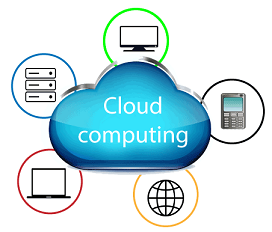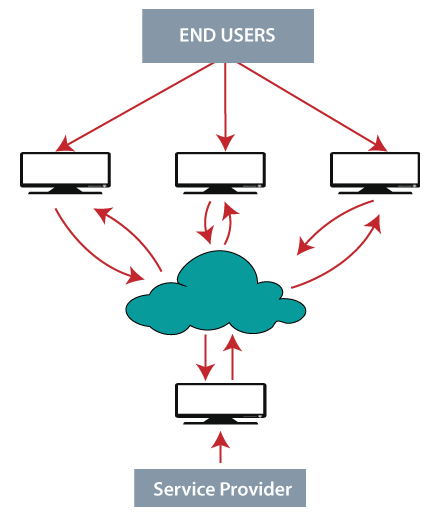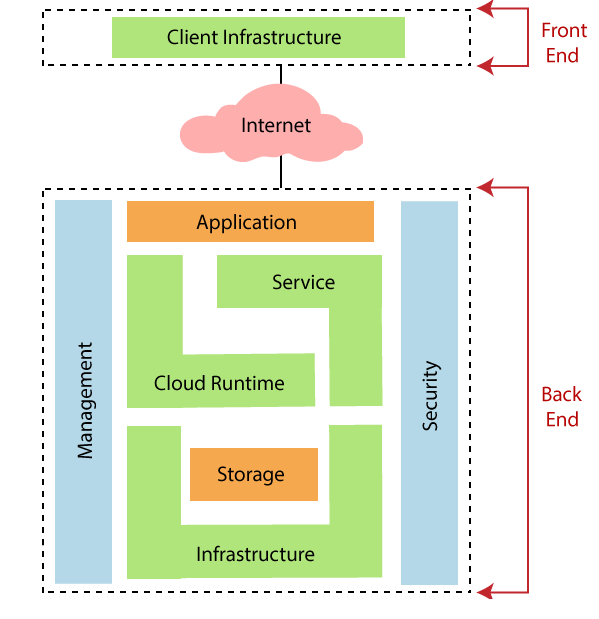Cloud Computing Tutorial
Our tutorial provides you the basic and advanced concepts of cloud computing in detail.
Our cloud computing tutorial is mainly designed for beginners and profession
What is Cloud Computing?
Cloud computing is a general term that is used to describe a new class of network-based computing that takes place over the internet. Example: AWS, Azure, Google cloud.
Cloud computing is the on-demand facility of computer Systems resources, especially data storage, and computing power, without any direct actively management by the user.

In other words, cloud computing is defined as the on-demand facility of computer power, database storage, applications, and other IT resources through the internet. It provides a solution for IT infrastructure at a low price.
Why Cloud Computing?
For providing the small, as well as extensive IT infrastructure, IT companies follow the traditional method. That means for any type of IT Company we need a server room that is the basic need of any IT companies.
In that server room, we need so many things like a mail server, database server, networking, firewalls, routers, switches, modems, QPS (query per second), configuration system, high need speed, and the maintenance engineers.
To establish such type of IT infrastructure, we need lots of money and resources. So, to overcome all these problems and to reduced the IT infrastructure cost, the concept of cloud computing comes into existence.
Why named Cloud?
The reason behind the term “cloud” came from the design of a network that was used by the network engineers to express or represent the location of different network devices and their inter-connection. The structure of this network design was similar to a cloud.

Features of Cloud Computing
The features of cloud computing are:
- On-demand self-services:-Cloud computing permits users to use web services and resources as on-demand. Any-one can login to a website at any time and use it.
- Broad network access:-Cloud computing is web-based, and it can be accessed from anywhere at any time.
- Resource pooling:-In cloud computing, resource pooling means allowing multiple customers to share a pool of resources.
- Rapid Elasticity:-In cloud computing, scaling of the resources is very easy, no matter whether it is horizontal or vertical. Scaling of resources means the capacity of resource to deal with increasing or decreasing demand.
- Multi-sharing:-In cloud computing, multi-users and applications can work more in a well defined and competent way within less cost by sharing a common infrastructure.
- Maintenance:-Maintenance of cloud computing application is simple because of no need of installation on each user’s computer, and it can be accessed from various places.
Architecture of Cloud Computing
The architecture of cloud computing is broadly divided into two parts.
- Front end
- Back end
Both ends are connected via a network, normally an Internet connection. The diagram below illustrates the cloud computing architecture's visual view:

Let’s discuss both parts of cloud computing architecture in detail.
- Front end:-Front end is the view that is visible to the client or a user. It is the client part of the cloud computing system. Front-end contains the user interfaces, applications, and networks that are used for accessing the cloud system. Example: a web browser.
- Back end:-The back end is the cloud itself. It contains all the resources that are required to provide a cloud computing service. This end is composed of huge data storage, virtual machines, security mechanism, services, development model, etc.
Cloud Computing Tutorial
- Cloud computing introduction
- History of cloud computing
- Cloud computing advantages and disadvantages
- Cloud computing applications
- Cloud Computing Infrastructure
- Cloud computing technologies
- Types of clouds
Cloud Service Models
- Cloud service models
- Software as a service
- Infrastructure as a service
- Platform as a service
- Identity as a service
- Network as a service
Virtualization
- What is virtualization
- Hardware and software virtualization
- Server virtualization
- Storage virtualization
- Operating system virtualization
Cloud Computing Advanced Concept
- Cloud computing management and its operations
- Cloud computing providers
- Cloud computing security
- Cloud computing storage
- Cloud computing strategy
- Mobile cloud computing
- Cloud Cube Model
- Big Data Vs Cloud Computing
- Grid Computing Vs Cloud Computing
- Future of Cloud Computing
- Cloud Computing for Business
- Federated Cloud